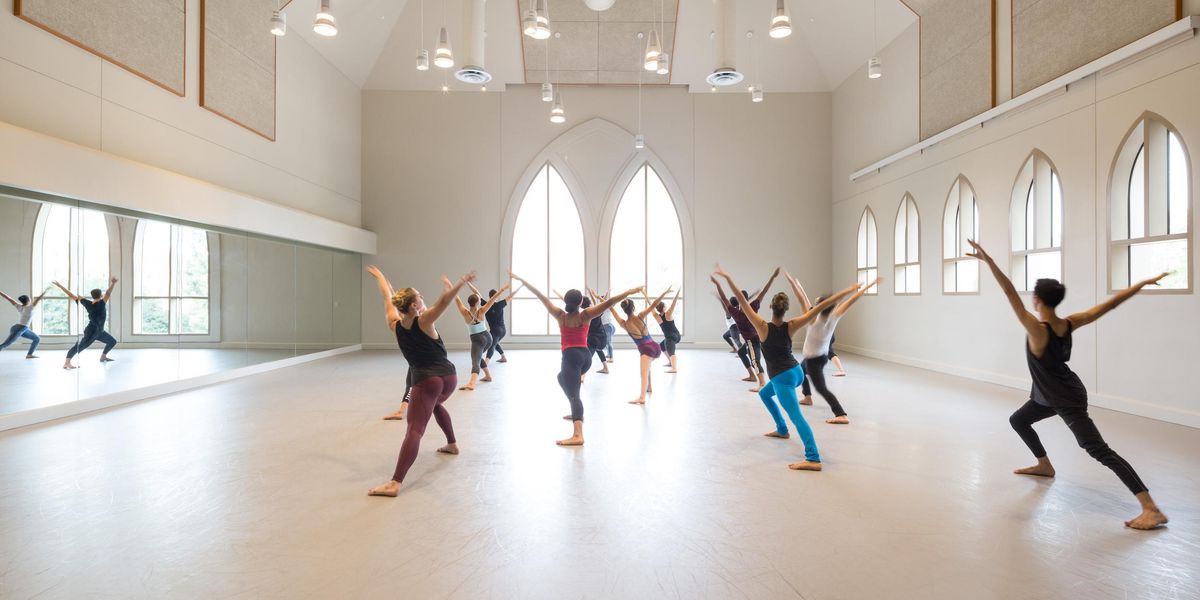Centerwork: When Kids Run the Show
Training the youngsters in ABT’s Nutcracker
Franco De Vita (left) and Alexei Ratmansky audition dancers for
The Nutcracker. Photo by Gene Schiavone, Courtesy ABT.
There are many memorable moments in Alexei Ratmansky’s The Nutcracker—from a baby mouse wreaking havoc in the Stahlbaums’ kitchen to Clara and her Nutcracker Prince meeting their adult selves amid swirling snow. And almost all of these standout scenes involve its youngest cast members. American Ballet Theatre’s version of the holiday classic, which debuted in 2010 and returns to the Brooklyn Academy of Music this month, features world-class dancers and thrilling feats of choreography in its principal parts. But the real stars of this production are the kids.
Of course, children are always showcased in this family-friendly ballet. But the 52 kids in ABT’s version, who range in age from 10 to 15 and are all students in the affiliated Jacqueline Kennedy Onassis School, perform with an uncanny level of poise and professionalism. This is the product of months of rehearsals that focus on both technique and storytelling.
“We don’t leave any stone unturned,” says Kate Lydon, artistic associate of the ABT Studio Company (and a Dance Magazine editor at large) who has served as a rehearsal director for the children’s cast. “We prepare them 100 percent so there are no surprises.” And yet what makes the students so endearing onstage is that they still retain their joy in performing. “Alexei wants personalities,” Lydon adds. “He doesn’t just want them to be technical machines.”
The children of ABT’s Nutcracker are selected at a September audition attended by Lydon, assistant principal of the JKO School Melissa Bowman, JKO ballet mistress Harriet Clark, and ABT artistic director Kevin McKenzie. Ratmansky usually observes as well, but this year he was out of town (though the casting of lead roles is never finalized without his input). Technical skill and height factor into the decisions, and acting ability is essential. “They have to be animated,” Bowman says. “The kids bring the story alive.”
The students begin rehearsing for three hours every Saturday afternoon. The JKO faculty teach the choreography in segments, then focus on polishing, spacing, and getting the children comfortable with props. In the final lead-up to the shows, the kids join in company rehearsals for the ensemble scenes and tricky transitions, like the Polichinelles maneuvering around the stilts under Mother Ginger’s skirt.
Athena Petrizzo as Clara in Ratmansky’s Nutcracker. Photo by Rosalie O’Connor, Courtesy ABT.
Character is emphasized from the earliest rehearsals. “We have conversations about the story and make sure they understand what they’re portraying,” says Bowman. “That’s a great lesson for any dancer, but Nutcracker lets them chew on that a bit, so we try to get into it as much as we can.” The constant attention to acting is necessary, she says, since not all children develop at the same pace. “Some come by it naturally; others are hidden gems—with a bit of coaching and patience they shine just as brightly.”
At a late-September rehearsal for the party scene, Bowman worked with the students on expressing excitement and disappointment. “Where are the gifts?” she exclaimed as a cluster of girls and boys burst through imaginary doors at the back of the room. “Oh, no, are they over there?” she yelled while they sprinted from one side of the studio to the other, mouths agape and arms outstretched. After a few runs she stopped to explain a stomping step. “It’s like a fit—angry—not arm, arm,” she said, imitating classical port de bras. She turned to address one of the boys. “I don’t feel the sense of bummed I need when the parents go, ‘No!’ Because everyone else around you is seriously bummed.”
A compelling stage presence and acting ability is even more important for the lead children, particularly young Clara. In Ratmansky’s interpretation, as in many Nutcrackers, the role requires a certain sweetness and innocence (a “Clara-ness” as Bowman puts it). While the technical demands are high, it’s Clara’s dramatic performance that ultimately carries the ballet.
For Athena Petrizzo, 13, who danced the part the past two years, this was the greatest challenge. She had some previous acting experience from doing community plays in her New Jersey hometown, but she still worked tirelessly on her character. “I always wrote down what Alexei told us we should be feeling. When I went home I would sit myself in front of the mirror and just go through the dance and see what facial expressions and emotions would suit the role of Clara,” Petrizzo says.
Internalizing the character allowed Petrizzo to really let go onstage, especially in the complex snow scene where she and her Nutcracker transform into a grown-up prince and princess, performed by ABT principals. “I tried to focus on how I would actually react in real life, not making it too balletic or fake,” she says. “I thought about making the audience believe that they weren’t watching a ballet but a real-life story.”
For a few of these gifted children, the dream of one day becoming a principal dancer may eventually come true. But regardless of their future in ballet, they walk away from The Nutcracker with great pride and confidence.
“It takes a lot of hard work to get there, but every role is important and they know it,” Lydon says. “They’re part of something so big that’s so good.” Petrizzo agrees: “It was such a spectacular feeling. Being onstage with the company, with the lighting, with the scenery, with the costumes, it’s just something I will never forget.”
A New York City writer, Elaine Stuart danced the role of Clara in the Charleston Ballet Theatre’s production of
The Nutcracker when she was 13.




